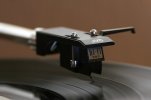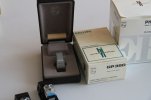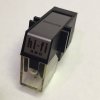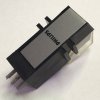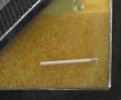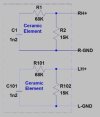reubensm
Well-Known Member
Dear all, after one of my old threads on a record changer restoration came up, I started receiving a few requests for details related to ceramic phonostages. Yes I have tried a few of these and found this one to be my favourite and the best of all. Here is the circuit just in case you are on the look out for it:
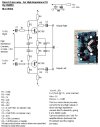
Assembly notes:
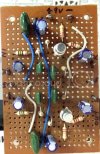
Performance notes: Why did I finally zero in on this circuit despite trying many others, with FETs, OP Amps, etc? The answer lies in the bass response and overall quality, especially when used with an idler driver turntable. Also the gain is not too high and hence, has worked well with all the NAD amplifiers that I've used it with. The cartridges that I've used with this phonostage are (1) EEI CS2000 and (2) Sonotone 8T.
If you want to avoid the trouble of having to build one, you can even try out a passive network but with some loss of gain. I have always preferred the active version. Here is an example of a passive eq circuit (courtesy: sonotone ceramic cartridge brochure). The circuit on the left is for a regular aux input and the circuit on the right is for connecting a ceramic cart to a magnetic cart input.
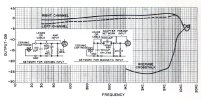

Assembly notes:
- Use only metal cap BC109s for enhanced performance
- Ensure wiring of both channels do not inter-cross if mounting both on the same bread board
- Watch out for dry solder
- If using a PSU, ensure suitable filtering and regulation for optimal results
- If mounting in a separate cabinet, prefer a metal box with suitable grounding, avoid grounding loops

Performance notes: Why did I finally zero in on this circuit despite trying many others, with FETs, OP Amps, etc? The answer lies in the bass response and overall quality, especially when used with an idler driver turntable. Also the gain is not too high and hence, has worked well with all the NAD amplifiers that I've used it with. The cartridges that I've used with this phonostage are (1) EEI CS2000 and (2) Sonotone 8T.
If you want to avoid the trouble of having to build one, you can even try out a passive network but with some loss of gain. I have always preferred the active version. Here is an example of a passive eq circuit (courtesy: sonotone ceramic cartridge brochure). The circuit on the left is for a regular aux input and the circuit on the right is for connecting a ceramic cart to a magnetic cart input.

Last edited:


